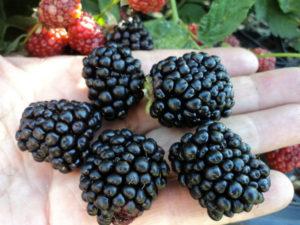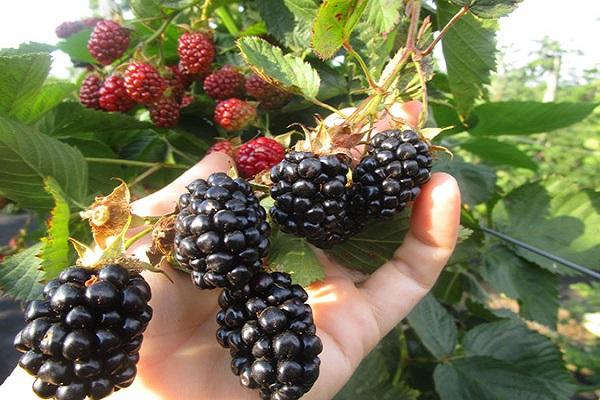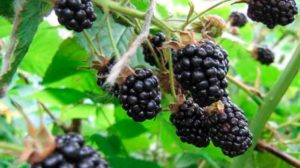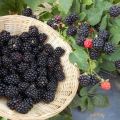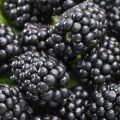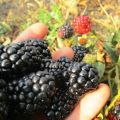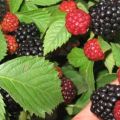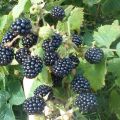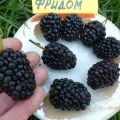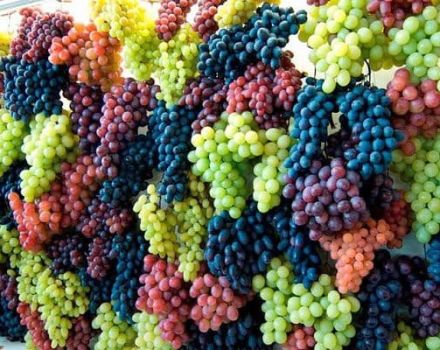Description and characteristics of Navajo blackberries, planting and care
Blackberry of Navajo variety of North American origin, it is widely grown in Russia and the CIS countries. The bushes successfully adapt to new conditions, bear fruit abundantly, rarely suffer from diseases, harmful beetles. The variety is grown for sale or personal consumption, since the berries have an excellent taste and appearance. You should first familiarize yourself with the features of the variety, the algorithm for planting bushes.
Breeding history
A late-ripening variety of blackberry was bred in 1987 in America by breeders from the University of Arkansas. The name comes from the name of the Indian peoples. Thornfree and Cherokee blackberry species were used as parents.
Description
Fruit
Blackberry berries are conical in shape, small compared to other species. The weight of one copy is about 4-7 grams. On one bush, there are about 500 berries - dark blue, shiny, with an excellent sweet taste.
The tasters rated it 4.9 points. Fruits keep their presentation for 5 days.
The seeds are small, almost invisible.
Navajo blackberries are excellent for transportation due to their dense skin.
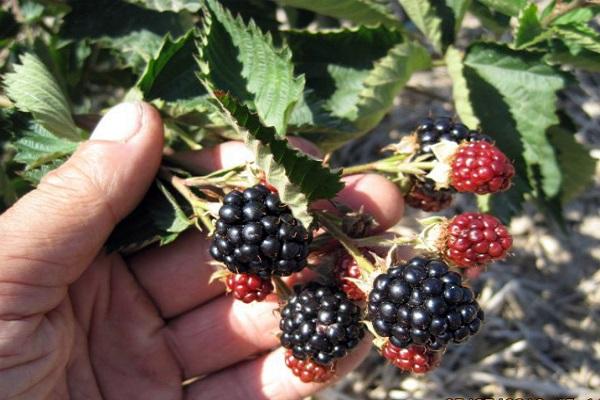
Bush
The bushes are erect, the shoots are smooth, without thorns, they grow up to 2 meters. Stems of dense structure, emerald hue. The plant does not require the installation of trellises, complex forming cuts.
Flowering period and ripening time
The Navajo blackberry blooms in the second half of June in central Russia. Inflorescences are small, inconspicuous, cream-colored with a hairy center. From the moment the ovaries form until the fruit ripens, 2 months pass.
Yield indicators, fruiting dates
Up to 7 kilograms of fruit are harvested from 1 blackberry bush of the Navajo variety. The harvest ripens from August 15, lasts until early September. The time of fruit ripening is influenced by the place of planting, weather conditions of the season.

Scope of berries
Blackberries can be used for fresh consumption, as their taste is dessert, sweet. You can add berries to baking, make preparations for the winter from them.
Resistance to pathologies, harmful beetles
The Navajo blackberry practically does not undergo diseases, beetle invasions, due to its powerful immunity. When the bushes are not properly cared for, their protective properties are reduced.
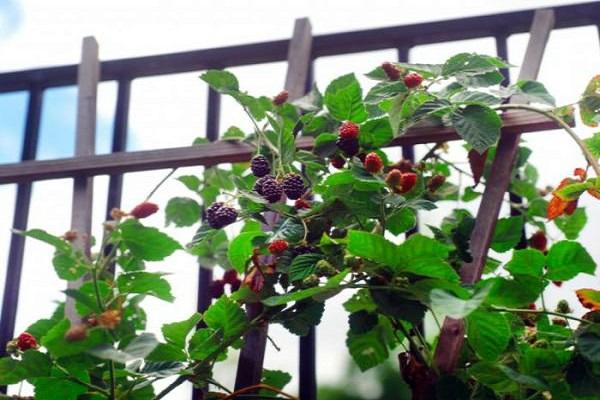
Advantages and disadvantages of berry culture
The Navajo variety has many positive traits, but there are also negative aspects.
| pros | Minuses |
| Self pollination | With cool summers, yield decreases |
| High yield | The light intensity affects the taste of the fruit |
| Undemanding to place, land | It is necessary to regularly remove excess branches thickening shrubs |
| Easy to clean | |
| Easy access to fruits during harvest due to lack of thorns | |
| Good preservation of blackberries, transportability | |
| Excellent taste |
Specificity of planting blackberries
Blackberry grows successfully on any land, but in order to get a good harvest, it is advisable to plant it in light sandy loam or loamy soils saturated with humus, with neutral or slightly increased acidity. Too moist soil, located in a lowland, with a high level of groundwater, is not suitable for bushes. There is a risk of rhizome decay.
Recommended timing
It is optimal to plant blackberries in late April, May, or early June, depending on the weather conditions in the region. The sooner the bush is planted, the more time it has for rooting before the arrival of frost. In the fall, do not plant, since blackberries do not tolerate frost well.
Choosing the right place
Blackberry bushes should be planted in a sunny, warm place, but you can also choose partial shade. In shade, they will not receive enough light, heat, the berries will form small, sour. A place on the plot should be chosen even or on slight slopes, next to fences, buildings. Blackberries should not be exposed to gusts of wind.
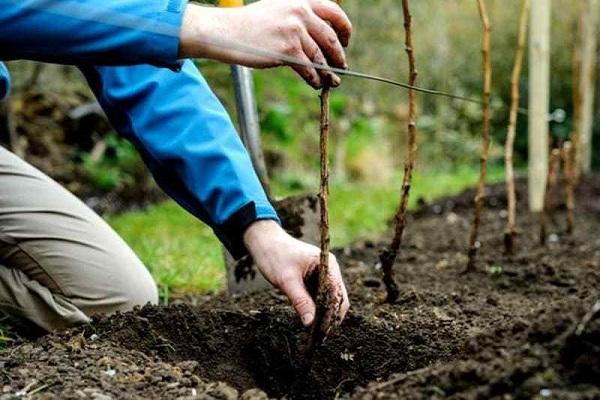
Soil preparation
If you plant a blackberry in properly prepared soil, it will bear fruit for 10-15 years. 2 weeks before planting, the soil is plowed with a shovel bayonet, cleaned of weeds. If the earth is acidic, add lime to it. Pits are dug 2-3 days before disembarkation, with a diameter of 60 cm and a depth of 50 cm. The distance between the beds should be 1.5 meters. A bucket of humus, 2 glasses of ash, 80-100 g of minerals are poured into the recesses, poured with water.
Selection and preparation of planting material
Seedlings are examined for diseases, beetle attacks. It should be flat, not deformed. The seedlings are dipped overnight in a root growth stimulator Epin or Matador. Additionally, it is dipped in a weak manganese solution.
Landing technique
The root system of the seedlings is carefully straightened, placed in the prepared pits, and covered with earth. After, planting is watered with 10 liters of water for each bush. The root area is mulched, the seedlings are shortened to 2-3 buds. Each bush is equipped with a trellis, this will increase productivity and make it easy to care for.
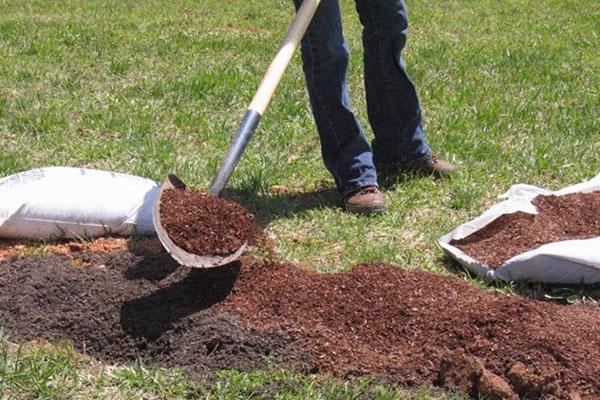
Since blackberries of the Navajo variety have an increased shoot-forming ability, pieces of slate, iron should be dug along the borders as a limiter.
Further care of the bush
Competent care of a blackberry involves its timely watering, loosening, pruning, fertilization. The bushes are treated with pesticides to prevent attacks of beetles and diseases.
Watering and fertilizing
Irrigate blackberry bushes should be in the presence of periodic precipitation during the formation and ripening of fruits. If the season is dry, abundant water-charging watering is done. Fertilize blackberries in March, 20-25 g of nitrogen - urea, ammonium nitrate - are added under the plants. During the ripening of berries, 30 g of potassium. Once every 3 years, they are fed in the spring with humus, compost, 4 buckets are taken per 1 bush.
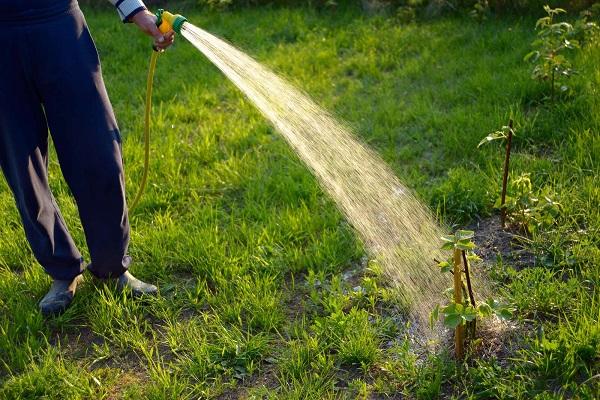
Shrub pruning
Young branches are pinched in September and June, when they grow up to 1 meter high. The top is cut off by 20-25 cm, and the side shoots. Manipulation stimulates the growth of lateral branches, increases pollen, the formation of ovaries.
Wintering
Preparatory work involves the complete removal of old, deformed shoots, the removal of branches from the trellis. Blackberry bushes are covered with organic mulch, agronomic fiber.
Possible diseases, beetle attacks, their elimination
Navajo blackberries sometimes get sick with septoria, powdery mildew and anthracnose. In the first case, the appearance of spots of brown or grayish color with a yellow border is noted. In the form of treatment, a solution of Bordeaux liquid is used, they irrigate the bushes before flowering and after fruiting.
Anthracnose is characterized by the appearance of rusty spots on the leaves, the leaves become brittle, fall off, dry out. To save the plant, spray it and the soil with Skor in a ratio of 20 ml per 10 liters of water before pollen and after the formation of berries. When a loose bloom of whitish color has appeared on the shoots, fruits, this indicates a disease with ash. After the snow melts, the bushes are doused with hot water, during the period of ovary formation, they are sprayed with Oxykh, Vectra, Fundazol.
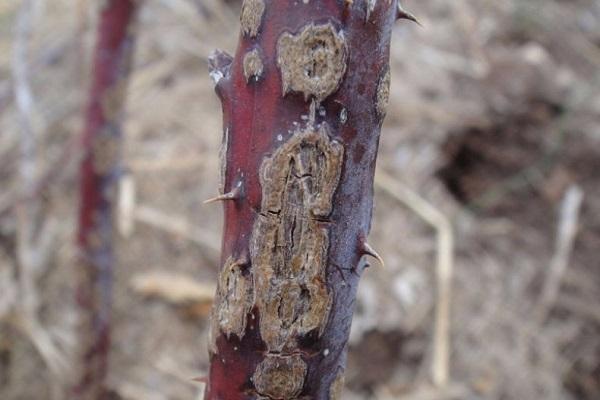
Among the harmful beetles, spider mites, blackberry mites, and raspberry beetles can attack blackberries. In the first situation, leaves fall, yield decreases, the growth of green mass is thinning. To get rid of insects, they are treated with tobacco tincture, onion peel and garlic broth with the addition of laundry soap.
Manipulations are carried out 2-3 times with an interval of 1 week. Blackberry mites feed on its fruits, determine their presence by deformation of the berries. Treatment is the same as for spider mite infestation. The raspberry beetle is detected by a large number of holes in the berries, they rot. The bushes are saved by treatment with Aktellik, Fufanol. 2 sprays are carried out with a pause of 10 days.
Harvesting and storage of crops
The fruits are harvested by hand in several approaches. After harvesting, overripe, damaged specimens are discarded. They are consumed immediately or recycled. Berries should be stored in a room with an air temperature of up to +5, it can be a basement, a cellar, a refrigerator. Blackberries are placed in wooden or plastic boxes, oilcloth or paper is placed on the bottom. The humidity in the place where fruits are stored should be no more than 80%.
